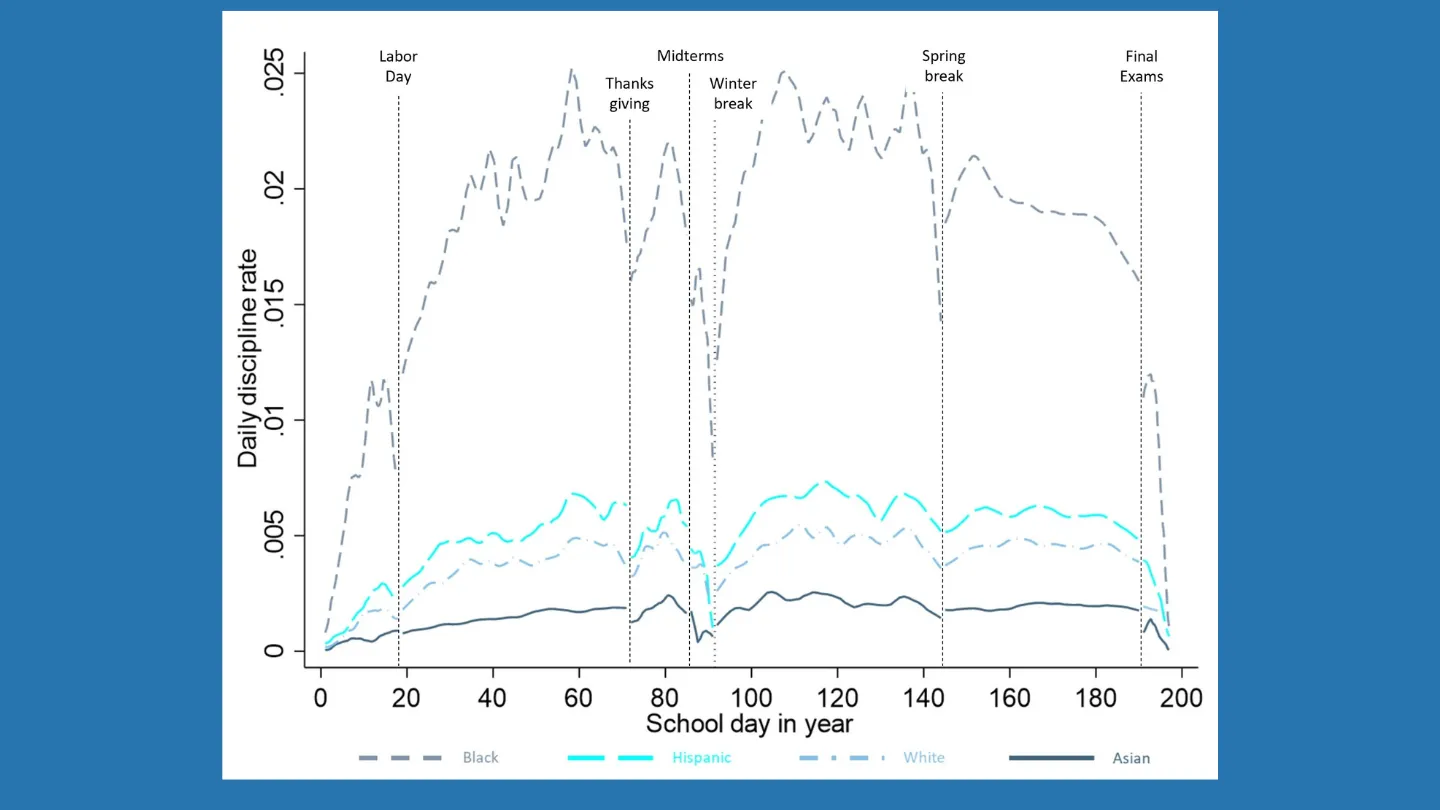In middle schools, racial disparities in discipline emerge early in the year and persist
A new study in the Proceedings of the National Academy of Sciences finds that daily discipline rates in middle schools change throughout the school year and escalate more rapidly for Black students than for White students. Discipline rates are typically collected and evaluated with end-of-year metrics that offer a static view.
The authors of the study — Dr. Sean Darling-Hammond, assistant professor of biostatistics, community health sciences, and education policy at UCLA; Michael Ruiz, researcher at UC Berkeley; Jennifer L. Eberhardt, professor of organizational behavior and psychology at Stanford; and Jason A. Okonofua, assistant professor of psychology at UC Berkeley — examined how discipline rates vary during the school year.

The researchers reviewed daily discipline data for thousands of the students and tracked how daily discipline rates change over time for students of various racial groups. They found that discipline rates for Black students, and Black-White disparities in daily discipline, grow significantly during the first weeks of the school year.
Reviewing four years of data, the authors modeled daily discipline rates for 46,964 students in 61 middle schools in one of the nation’s largest school districts. Daily disciplinary actions followed a similar pattern across schools, school years, and student subgroups, with daily rates escalating from the first days of the school year to the weeks before Thanksgiving, declining just before major school breaks, and increasing steeply after breaks. Because discipline rates for Black students rose more rapidly than those of White students, discipline disparities grew precipitously in the beginning of the year.
In a short and novel video, the authors translate the data into sound to convey how Black students might feel as they experience growing racial disparities in discipline early in the year. Racial disparities that were visible within the first 20 days of a given school’s school year were predictive of the disparities that emerged in that school at the end of the year. According to the authors, understanding the dynamic nature of discipline can help pinpoint when and where to deploy limited resources aimed at reducing disparities.
By: Prashant Nair for PNAS
Media contact: Carla Denly, Associate Dean for Marketing & Communications, cdenly@support.ucla.edu
